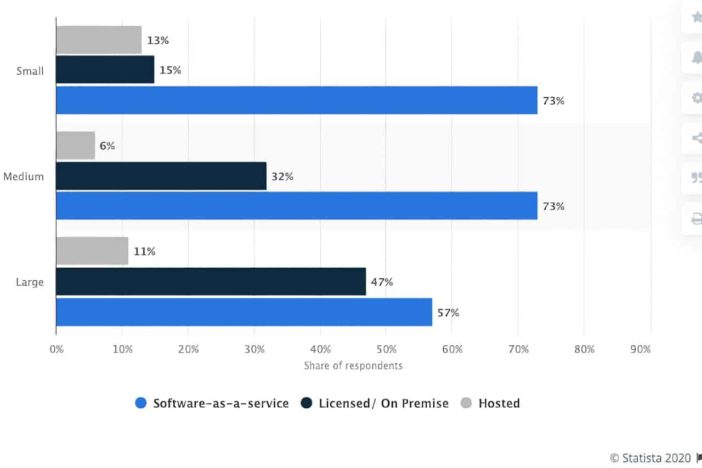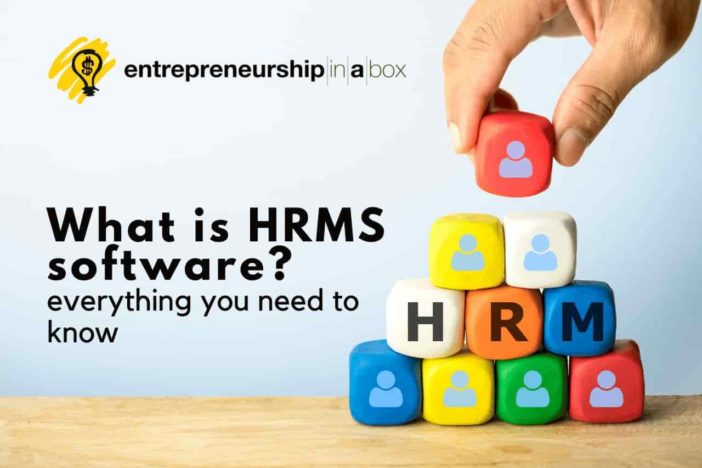The Human Resources department is a significant part of the entire company management system. They are responsible for maintaining a smoothly functioning affinity between the employers and the employees. Thus the efficiency and productivity of the employees and their objectives that need to be accomplished somewhere or the other are contingent on this affinity. So, having HRMS software will help you achieve these goals.
Therefore, as companies and businesses expand globally, most companies employ ERP or enterprise resource planning systems to meet these challenges posed to them.
The ERP systems assist the HR management in accessing the details of the performance and personal-related information that is collected and stored in the global database with the help of the HRMS software.
💡 Key Takeaways
HRMS software streamlines HR tasks, improving efficiency and productivity
Key functions include labor management, payroll, and recruitment
Benefits of HRMS software include employee self-service, manpower management, and performance appraisals
Consider integration, employee satisfaction, customization, customer support, and cost-effectiveness when choosing HRMS software
What is HRMS software?
The HRMS, or the Human Resources Management System, is a software application used by Human Resources management to manage HR functions. The software collects and stores information related to the working and functioning of the employees through an automated system. This automation reduces the overload of repetitive tasks that earlier used to be manually done, thus, allowing space for shifting the attention of HR toward more critical and strategic studies. When considering implementing an HRMS, it’s important to assess various factors, including HR software pricing, to ensure the software aligns with the organization’s financial capabilities and objectives.”
According to a book penned by Michael Donelly in 2005, the data collected can provide a foundation for integrating the management of hiring, learning, compensation, employee performance, career development, and internal mobility and ensuring that the workforce knows resources. (Donelly, 2005).
HR is inevitably the propelling force behind every company and decides whether the company will win or bust in the long run.
So what are the functions that the HRM Software plays?
As the name goes, HRM software is a human resources management software that includes the tasks of an HRIS or cloud-based HR Software along with the additional functions of the human capital management system. In short, the two of the most essential and typical tasks allotted to an HRMS are:
- Labor management: The HR team has to cover a wide range of tasks around the labor or the employees appointed and working in the company. These tasks are essential for performance appraisals, planning the promotions of deserving employees to higher positions, and ensuring that employee engagement remains productive and high.
- Payroll and Time: The data collected by the HR department thus helps calculate and estimate the payrolls of the employees.
- Recruitment: HRMS software streamlines the hiring process by automating job postings, applicant tracking, and candidate assessment, ultimately simplifying talent acquisition.
If you seek comprehensive insights into HRMS software, you may explore how it can streamline your HR management processes. Learn everything you need to know about it and its benefits by delving into the various resources.
What is this wide range of tasks that need to be regulated routinely?
Salary and Payroll disbursement
The information related to the employees’ performance and engagement collected by the HRM software helps the HR team calculate the employees’ payroll and salary.
Recruitment of new employees
Before recruiting new employees, the first step is to create vacancies by filling up the positions above the ladder. By filling the posts or by promoting deserving employees, the places they once inherited create vacancies. The HRM Software helps the department conduct the recruitment process for candidates with the desired skill set.
The onboarding and information Management
Once the new employees are recruited, the HR has to collect the information related to the employed employee-their previous work information, their important personal details like age, gender and contact numbers, and a lot of other information that can be easily automated by the HRM Software, thus easing up the mundane and manual process.
Employee Services
Employee self-service is a significant module that comes as a part of the HRM Software. This information suite is available to all employees in the central hub. This enables the employee to view and download their payslips, access the leave updates, update their attendance, and view the attendance data without rushing up to the HR department.
Manpower management
Managing manpower has become the most docile due to HRM software. The easy accessibility to the database that is regularly updated by the automated software makes it convenient for the Human resources department.
Performance appraisals and promotion
Since the data related to the performance of the employees are all stored in the cloud, accessing these pieces of information before deciding on the performance appraisals and the promotion-related interviews and paperwork becomes convenient for the HR department.
Timely reporting
The dashboard of the HRM software conveniently places all the information related to the predefined statutory like the Establishment Act Report and the CLRA reports, along with the MIS reports. Accessing these reports is made favorable according to the needs and requirements of the HR department. Not only that, the integration of filters allows the generation of any workforce-based information on demand.
Training and learning
Most employees, at some point during their employment, look up to learning certain practices they are new to or require an understanding of. For instance, the employees who recently joined the organization must understand the company and their job descriptions to deliver a better functioning, productive working environment. The feature of the HRMS makes it more manageable for the employees to log into the system and undergo a curated and customized training and e-learning module dedicated to addressing their needs.
HRMS software is being utilized by various companies and businesses globally. Below is a statistical graph by Statistica that shows the Human Resources Management Systems distribution worldwide in 2019.

What do you need to look at before going for the HRMS Software?
1. Integration with the existing system
Before zeroing down with any software, one needs to look over the existing systems. If the HRMS is incompatible with the current system, you must establish compatibility with another investment. That would not make your software cost-effective. The HRMS should have comfortable and direct compatibility with the existing system, like the biometric system that logs in the attendance details and the payroll inputs.
2. Employee satisfaction
The most vital aspect of any organization is ensuring that their employees’ joy remains the top priority. With the manual method of accessing the data related to leaves, salary details, and many more, an employee had to make repeated runs to the Human Resources department. With the introduction of the HRM software, this manual process became more comfortable and more employee-friendly. They can access the data stored in the cloud without going through the hassle, thus increasing employee satisfaction. The software that you choose should be user-friendly and not demand any pre-requisite detailed knowledge.
3. Should be customizable according to the business needs
Every company and business has different requirements to address. The introduction of the HRMS system in the existing system will remodel and upgrade the system with new features and policies.
4. Convenient customer support
Every product that you buy should have a customer support system that you can look up to in times of difficulty handling the product. Importance of customer support becomes even more indispensable when it comes to software. Before investing in an HRMS system, the software must have a convenient and efficient method of extending customer support. An efficient customer support system should not make their customers wait in the pipeline.
That would be a hassle for customers looking forward to hassling-free support. In short, the after-sales customer support should be active and prompt with their approach and equally value their customers’ time.
5. The cost-effectiveness of the HRMS
Before investing in any expenditure, be it for something as small as an office chair or as huge as an HRMS system, you should always consider the needs that your organization demands. Not every business requires the same network. Having a clear-cut and unambiguous understanding of the requirements, you can get an efficiently working HRMS system.
Conclusion
The global implementation of the HRMS system has many effects on the business and the employees. Significantly, the company is expanding globally to various cities and states. A lot of factors come under consideration radar like Cultural differences, the efficiency of distant communication, and the resistance that can be offered to this change by some of the employees.
The effects are inevitable in every move to implement a new method or software in the organization and business. Global implementations require companies and organizations to keep the cultural diversity they will be exposed to under consideration. The system should be flexible enough to accommodate minor changes that might be required. Not only that, it should not be a hindrance in employee communications and especially since the transmission is going to be distant.
A top management team should be at the organization’s disposal to ensure that the software is implemented efficiently and effectively. It should also ensure that the employees are well prepared to incorporate the software and the organization. Trust increases the positive assessment of IT usefulness. The organization should make it a point to include the employees in this change and implementation process.





